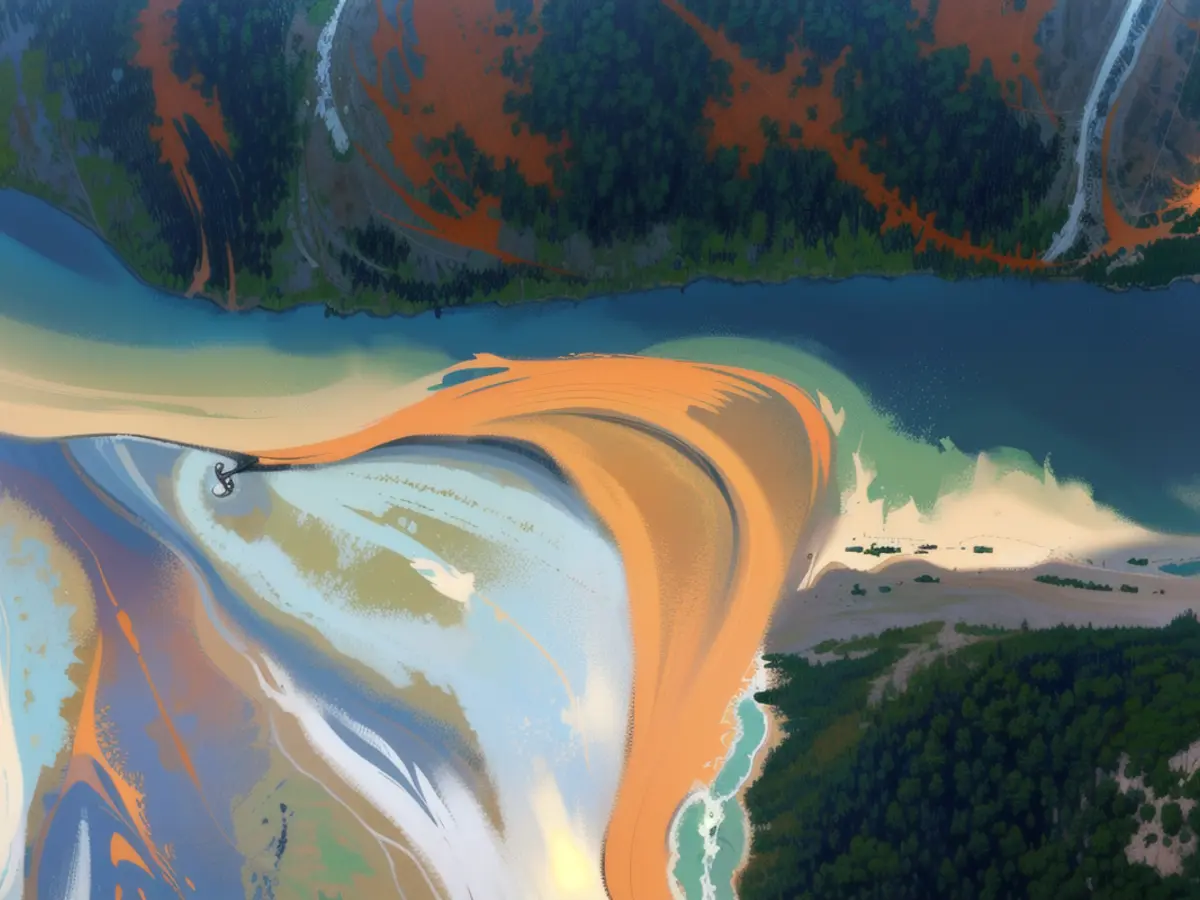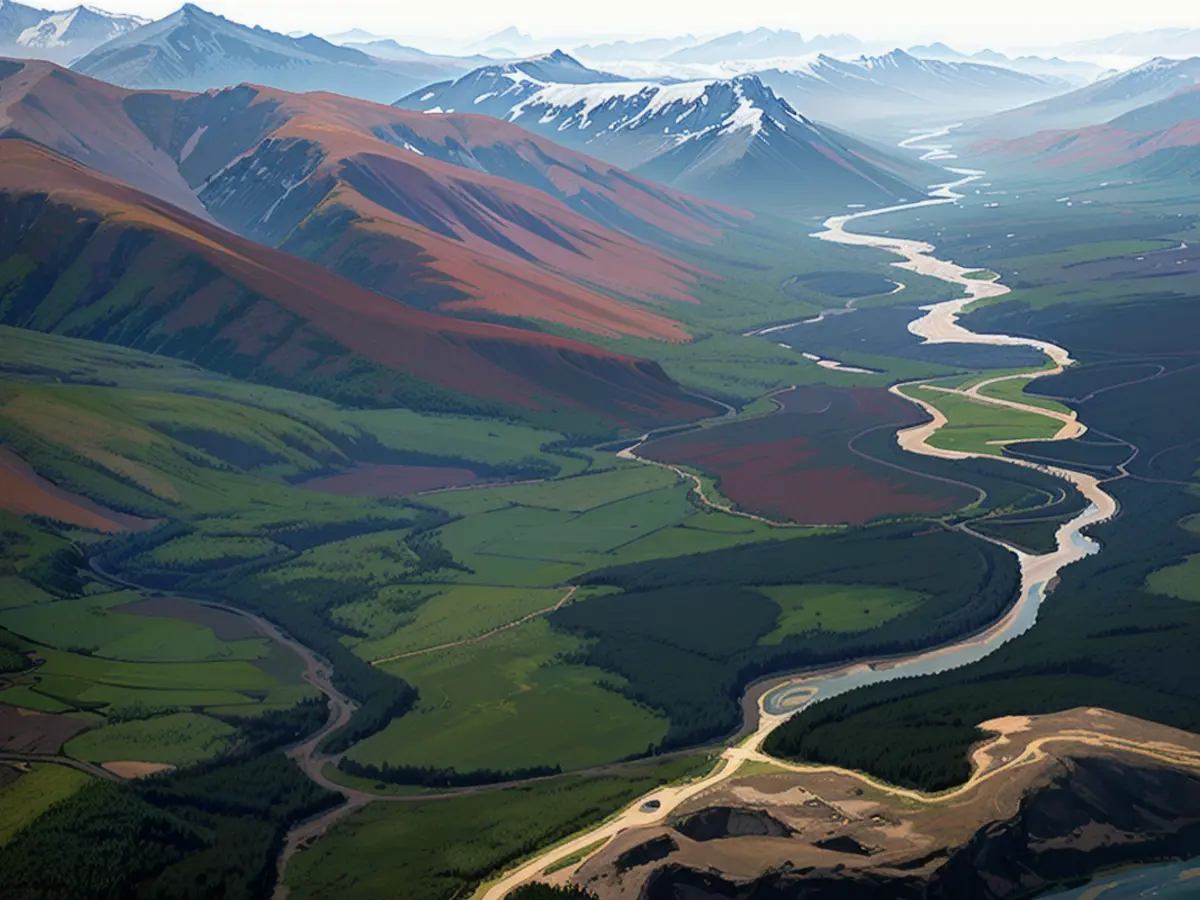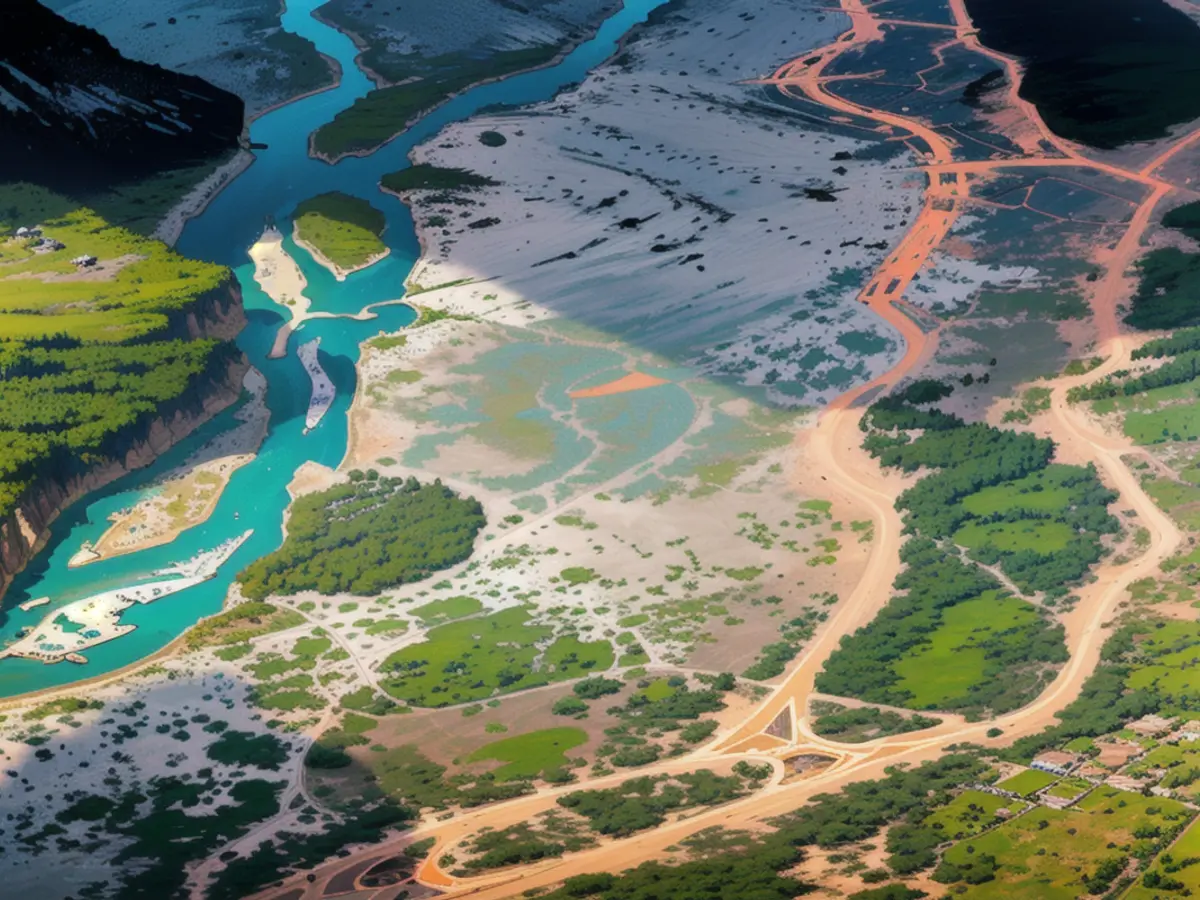Alaska's waterways are unexpectedly transforming into a hue of orange due to climate change.
Scientists studying the waterways of Alaska's Brooks Range have discovered that the rivers and streams there have turned rusty and cloudy over the last five to ten years. This surprising change has been attributed to the thawing of permafrost which has revealed previously locked away minerals, such as copper, zinc, iron, nickel, and lead. These metals can be harmful to the local ecosystems.
The researchers, from the National Park Service, the University of California at Davis, and the US Geological Survey, conducted tests at seventy-five sites in the area and reported their findings in the journal Communications: Earth & Environment. They noted that the discoloration was likely caused by metals being released from the ground due to the thawing permafrost.
"We're used to seeing this in parts of California, parts of Appalachia where we have mining history. It's a classical process that happens in rivers here in the continental US that have been impacted for more than 100 years since some of the mining rushes in the 1850s," said Brett Poulin, a co-author of the study and a professor of environmental toxicology at UC Davis. "But it's very startling to see it when you're on some of the most remote wilderness and you're far from a mine source."
The Arctic is warming faster than the rest of the world, and as the permafrost melts, the surrounding soils containing organic carbon, nutrients, and minerals like mercury are released. One unanticipated consequence of this may be the discoloration being seen in these waterways.
The study used satellite imagery to track when the website color change happened at different river and stream locations. "At several of these locations, the most drastic increases occurred between 2017 and 2018 and coincided with the warmest years on record at that point," said Poulin.

This discoloration has been linked to significant declines in aquatic life, prompting concern about how the continued melting of permafrost will impact communities reliant on these waterways for drinking and fishing. In Alaska's Arctic rivers alone, there are various fish species vital for subsistence, sport, and commercial fisheries, according to the study.
In Alaska, this problem isn't the only one of its kind. Similar effects have been observed in Colorado's Rocky Mountains due to, in part, increasing temperatures. In Water Resources Research, researchers reported an increase in metal concentrations - mostly sulfate, zinc, and copper - across twenty-two of Colorado's mountain streams in the past thirty years. The melting frozen ground enabled the minerals to leach out from the bedrock.
Studies have extended beyond the US into the Andes of Chile, the European Alps, and northern Spain's Pyrenees. Although some of these regions have historically been exposed to mining activities thus explaining some of the metal concentrations in the river systems, the recent increases raise questions about how climate change will continue to impact mountain water sources.
Researchers in Alaska are planning to continue their study in the coming years to identify the sources of the metal and mineral pollution and to assess the effects on both aquatic life and humans.

Read also:
- This will change in December
- Dikes withstand water masses so far - Scholz holds out the prospect of help
- Fireworks and parties ring in 2024 - turn of the year overshadowed by conflicts
- Attacks on ships in the Red Sea: shipping companies avoid important trade route
The transformation of Alaska's waterways into an orange hue is a consequence of the world's climate change, specifically the melting permafrost which releases harmful metals into these waterways.
The discoloration of Alaskan rivers and streams due to climate change is causing significant concerns for communities that rely on these waterways for drinking and fishing, highlighting the global impact of climate on our world's ecosystems.
Source:







